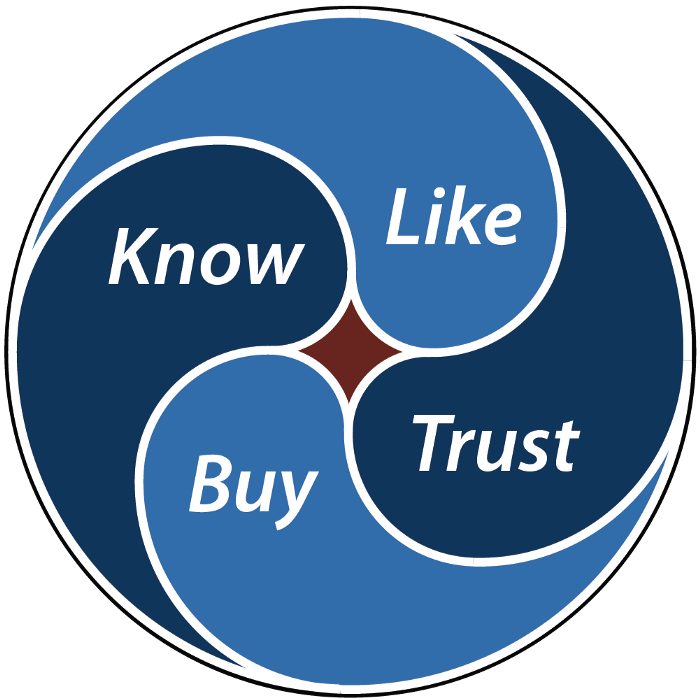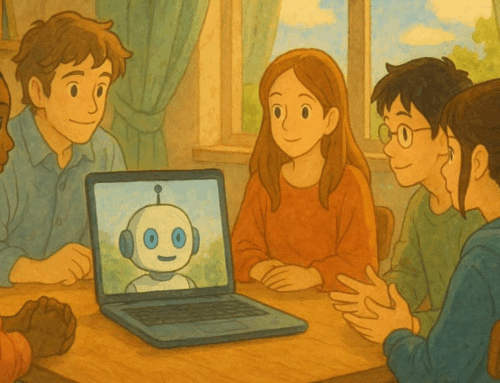Selling is only pushy if you haven’t done enough pulling.
 Photo by Camrocker on iStock
Photo by Camrocker on iStock
My first sales job was selling donuts door-to-door. Every Saturday morning, I would knock on the doors of strangers, introduce myself, and make my pitch. Within a few minutes, the stranger would either hand me five bucks, or shut the door in my face.
Every sale was a struggle — until I learned about the 4-Step Marketing Cycle.
One Saturday, I decided to try an experiment. I bought 2 dozen donuts myself, and I gave one to every house on Johnson Street.
“Here’s a free donut,” I said after I introduced myself. “I’ll be back next weekend, and I’ll ask you to buy a dozen. See you then!”
The next Saturday, I made more sales on Johnson Street than all the other streets combined.
Instead of selling to strangers, I was following the 4-step Marketing Cycle.
How the 4-Step Marketing Cycle Makes Selling Easy
There are four steps to the Marketing Cycle:
Know, Like, Trust, and Buy.

Each step in this cycle is a deepening of your relationship with someone.
If you try to skip a step, you can lose the sale, damage your relationship, or scare people away for good.
When I first started selling donuts to strangers, it didn’t matter to me if people didn’t like my pitch, or didn’t like me. I didn’t care, because I was following the advice to ‘collect your no’ and move on.
But I was surprised to find that by creating a simple relationship (this is my promise, here’s a free sample, I’ll fulfill that promise) I was able to dramatically increase my sales numbers. Not by knocking on more doors, but by creating more relationships.
It’s like feeding a timid wild animal: it’s delicate. If you throw food at them, they will think you are attacking them, even though your intention is to be helpful.
To feed a wild animal, you have to be patient. You have to move slowly. You have to build trust. You have to get them to like what you’re offering, and you have to be very cautious about how you deliver it.
If you guide people gently to the next step, your Marketing Cycle will be longer and stronger.
Pushy Salespeople Don’t Care About The Customer
A used car salesman will often tell you (as soon as you get on the lot) all about the low-low-price on their newest SUV, even if what you want is a late-model sedan.
 Photo by Prostock-Studio on iStock
Photo by Prostock-Studio on iStock
What you want to buy may not be what they want to sell — and pushy salespeople will try to sell you what they want — instead of helping you buy what you want.
If you don’t know someone who is selling to you, or you don’t like them as a person, or you don’t trust them, that means you won’t feel confident in buying from them.
If you skip steps in the 4-Step Marketing Cycle, you won’t make it to the end, when people actually buy from you. Any sales you do make will be challenging, uphill battles.
Nobody Hates Buying
Jeffrey Gitomer likes to say,
“People hate to be sold, but they love to buy.”
You’ve probably seen this yourself. Somebody makes you an offer and you think, ‘Shut up and take my money!’
That’s the experience that we want people to have when you make an offer. It doesn’t happen quickly; it happens at the end of this 4-step journey.
1. Getting Known
What do you do? Why should I care?
Talk about your areas of expertise, and be generous with your knowledge. Staying on brand (and on message) will help people categorize you. If people can categorize you easily, they are going to come to you first when they face the problems you solve.
Find communities where your customers already congregate. Go there and offer your expertise. When you are talking with your customers, be generous with what you know.
2. Getting Liked
Do you care about me? Do you make my life better?
Everybody with a business has a website and an email newsletter list nowadays. But, that doesn’t mean they use them well. Blasting your message is a one-way communication, and isn’t enough to build a relationship.
You need to balance authenticity with automation. Talking with many people all at once is fine, but relationships are built individually. When you are talking with your customers, engage with individuals one-on-one.
3. Getting Trusted
Will you do what you say you will do? Can I believe you?
According to research by LinkedIn, more than 50% of salespeople believe that trust is the key to closing. To sell more of your offers, build your list, and turn strangers into customers, generating trust increases your conversion ratio.
Hubspot says 96% of buyers think a meeting is worth their time if you focus on the value delivered to them. When you are talking with your customers, ask questions about their situation.
Follow these three steps before asking for a sale:
- Be generous with what you know
- Engage with individuals one-on-one
- Ask questions and offer customised feedback
The whole point of marketing yourself is to invite the right people to come to you and say, “Hey, I know you, I like you, I trust you, and I want to buy what you have to sell.”
Guiding people through the 4-step Marketing Cycle is how you pull them closer. If someone makes it to the end of this customer journey, you are not a salesperson, you are a trusted advisor.
Marketing Yourself as a Trusted Advisor
Only 3% of B2B buyers say that they trust a sales representative. People know a relationship with a salesperson is loaded, and every sales rep has an agenda: they want to part you from your cash.
In the same survey, 79% said that they would buy from a trusted advisor.
The distinction here is clear. Salespeople want you to buy, while trusted advisors get to know you first.
Developing a trust-based relationship involves more than a transaction. It starts with your investment — an investment of your time, curiosity, and commitments.
As you market yourself, don’t be your own sales representative. Become a trusted adviser of your customer, someone who adds value to their business.
How can you become a Trusted Advisor to your customers?
Let’s review the three steps above:
- Be generous with what you know
- Engage with individuals one-on-one
- Ask questions and offer customised feedback
After following these three steps, repeatedly, people will start asking you, ‘How can we work together?’ You won’t have to ask for the sale, because at the end of the Marketing Cycle, people are willing to buy without being asked.
If your sales numbers are low, ask yourself if you are skipping one of these steps. Try taking that step this week.
- How can you be generous with your expertise this week?
- How can you engage with future customers one-on-one?
- How can you ask questions that lead to your offers?
Answering these questions can create a path of steps for your future customers to follow.
This article is an excerpt from my book, ‘Marketing Yourself.’ You can read the whole book here.





Leave A Comment